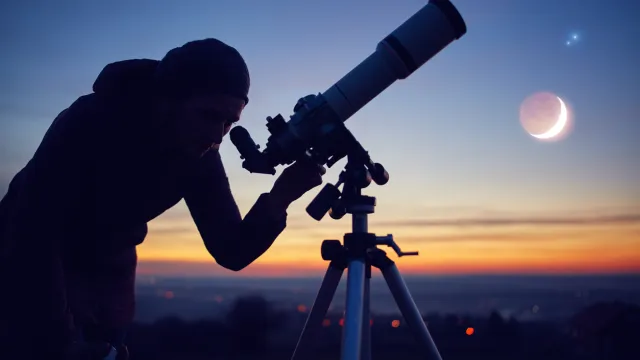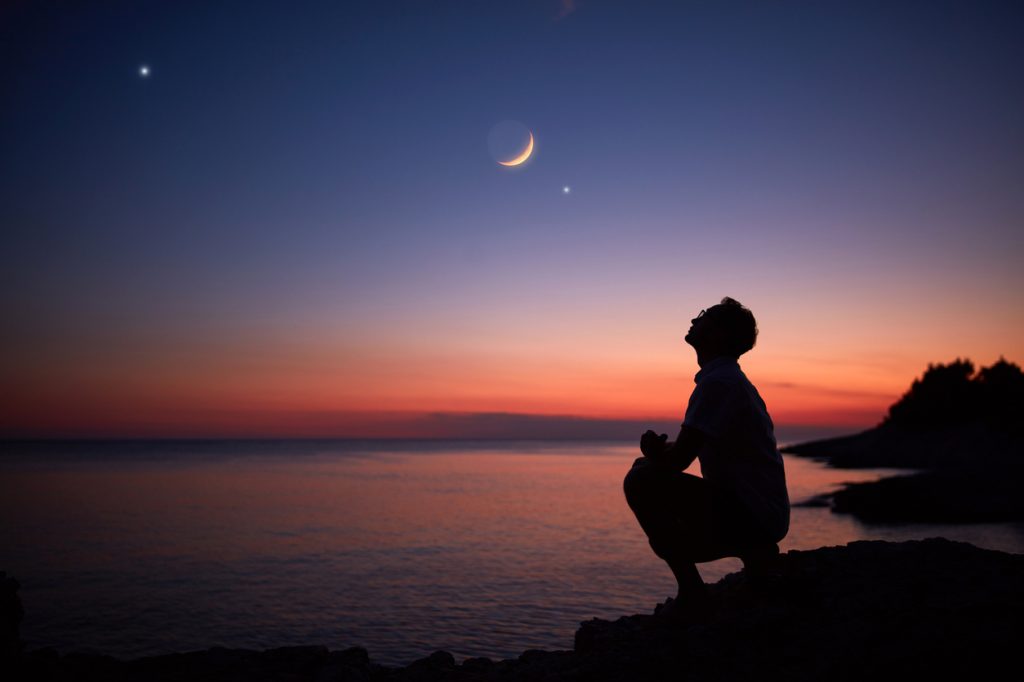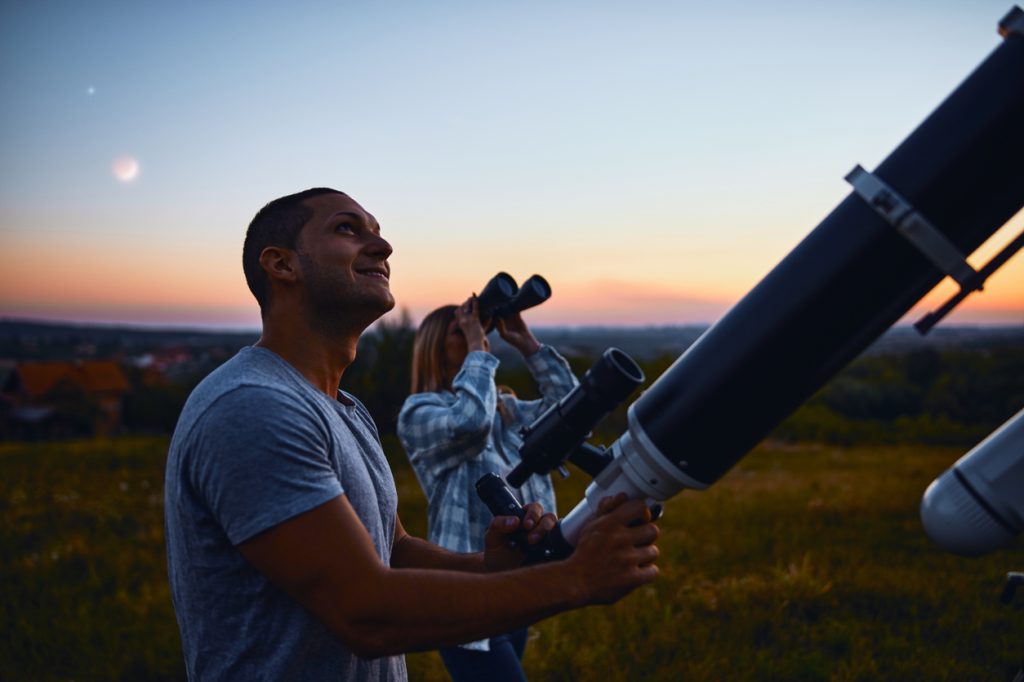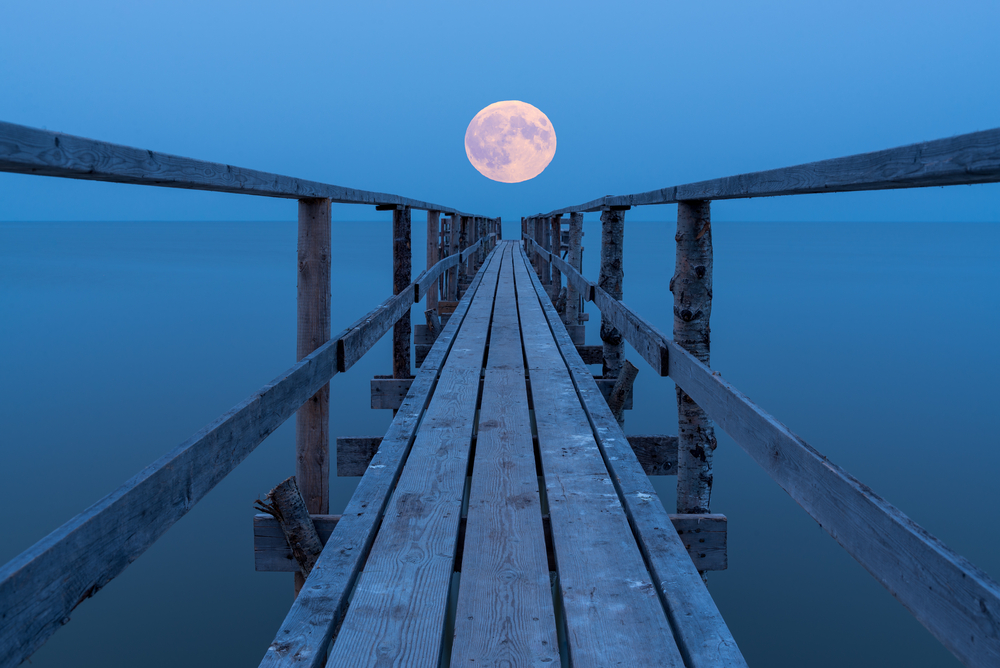Venus Will Be a “Bright Beacon” in the Morning Sky Tomorrow—Here’s How to See It

Even though special astronomical events may come and go, stargazing tends to follow some relatively straightforward rules. And unless you’re watching a solar eclipse or trying to catch sight of an early evening passing comet, arguably one of the most important tips is to make sure you’re scheduling your viewing hours for when the sky is at its very darkest. However, every so often, objects are so brilliant that they can be seen even alongside sunlight. That includes Venus, which will be a “bright beacon” in the morning sky tomorrow morning. Read on to see how to catch a special view of our closest neighboring planet.
RELATED: 6 Stargazing Secrets, According to Astronomy Experts.
Venus will shine at its very brightest when it rises tomorrow morning.

When it comes to celestial objects, few stand out quite as much as Venus. But while our neighboring planet is often a fixture in the night sky thanks to just how brilliant it is, it’s about to get even more striking as it reaches its brightest possible point tomorrow morning around sunrise, Forbes reports.
The upcoming spectacle—which earned it the nickname “Morning Star” over the course of history—marks a change in the best viewing time for our sister planet, which is easily visible in most evenings through winter and summer. However, “the superheated, cloud-covered planet” will now appear “as a bright beacon” around dawn, putting on a special show for stargazers hoping to catch the best possible view, according to NASA.
RELATED: A Special Solar Eclipse Will Create a “Ring of Fire” in the U.S.—Here’s How to See It.
Our neighboring planet is reaching a special point in its orbit around the sun.

Even in a sky filled with dazzling objects, Venus stands out as a nearly permanently visible bright spot rivaled only by the moon and sun in terms of brightness. That’s because besides the fact that it’s next to us in order from the sun, it’s also covered in dense clouds that reflect plenty of sunlight, according to astronomy website EarthSky.
However, the latest increase in brightness has to do with Venus’ position in its orbit around the sun. Scientists say that since our neighboring planet appears to us on Earth in phases similar to the moon, its brilliance can change based on where it happens to be relative to us.
“Venus is closest to us when it’s an extremely fine crescent, but it appears brighter when the crescent is a bit wider, even though it’s farther from us,” Tom Kerss, astronomer and author of Observing our Solar System: A Beginner’s Guide, told Forbes. “There’s a trade-off between apparent size and distance that results in Venus reaching its maximum apparent brilliance when its phase is around 30 percent illuminated from our perspective.”
And while the moon may reach its brightest for viewers on Earth once a month, the same can’t be said for Venus. The planet won’t appear this brilliant in the sky again until February and April of 2025, according to EarthSky.
RELATED: 8 Amazing Things You Can See in the Night Sky Without a Telescope.
Here’s how you can quickly locate Venus around sunrise tomorrow.

If you’re planning on catching a glimpse of Venus for yourself, you might want to set your alarm slightly earlier than usual on the morning of Sept. 19. The planet will begin to rise in the east about two hours before sunrise as a brilliant spot that will be hard to miss if weather conditions are ideal, according to Forbes.
Venus will remain visible even as the sun begins to creep over the horizon. And while its very brightest point will have passed after tomorrow, it will still be quite visible during the early hours and begin to appear even higher in the sky as the month goes on, according to EarthSky.
But even if it’s bright, it might be hard to keep track of where Venus is once daylight begins to creep in. You can keep tabs on it by using another object as a reference point, such as the moon, a tree, or a utility pole in the foreground, EarthSky suggests.
RELATED: The 10 Best Destinations for Stargazing in the U.S.
There are some other notable astronomical events coming up this month, too.

Of course, the vastness of the night sky means there’s more than just one upcoming highlight for stargazers. Those who wake up early to spot Venus this week can also catch a view of Mercury roughly an hour before sunrise, per Forbes. The much fainter planet will also rise in the east but will only be visible for about 30 minutes before it gets washed out by morning light.
Some of our other closest neighbors will also be shining prominently in the coming weeks. Saturn and Jupiter are “easy-to-observe” for the remainder of September, both of which rise in the southeast after sunset, per NASA.
And on Sept. 29, we’ll be able to view yet another “supermoon” as the full Harvest Moon rises in the sky. While it won’t be quite as bright as last month’s notable “super blue moon,” this occurrence marks the fourth and final supermoon of 2023.
RELATED: For more up-to-date information, sign up for our daily newsletter.